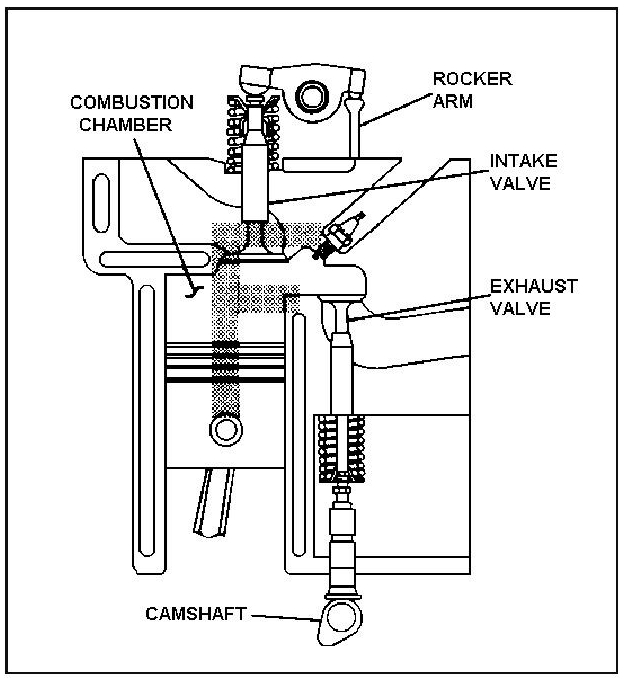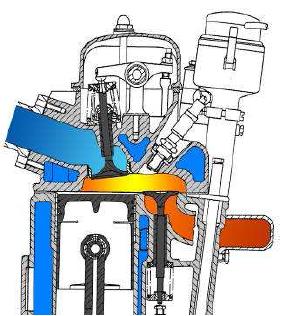What year / model is this Oldsmobile ?
#1
What year / model is this Oldsmobile ?
Please see photos, we are trying to identify if this car to determine if it's worth getting any parts from before it's bulldozed into the ground. It's rusted beyond the point of moving as the floors are gone. However the engine (6 cylinder) is still in it as well as a little bit of the dash, steering column, trim. The locals tell me it's from the 1930's and it's been sitting there since the 1950's. To bad someone didn't cover it up. Thank you.








#2
Without looking it up, I believe that is a 1937. That would make it an L6. You can google pics to confirm.
Covering it up wouldn't have saved it.
Covering it up wouldn't have saved it.
Last edited by wmachine; April 9th, 2012 at 07:16 AM.
#4
"L6" means "L-head 6" or "Flathead 6."
They didn't come out with OHV 6's until the '50s.
__________________________________________________ ______________
Someone's gotta say it, so I will:
It'll buff out!
- Eric
They didn't come out with OHV 6's until the '50s.
__________________________________________________ ______________
Someone's gotta say it, so I will:
It'll buff out!

- Eric
#5
There are several 1937 guys over on AACA Olds Forums who can tell you what they're looking for. May have to resize your pics to post them over there.
http://forums.aaca.org/#oldsmobile-clubs
http://forums.aaca.org/#oldsmobile-clubs
#8
I don't mean to be argumentative, Joe, but I've always heard it used as a reference to valve configuration and not cylinder configuration.
I have taken the liberty of doing a quick search, and, much as I would usually disparage the use of Wikipedia as a source, they say,
"A flathead engine (aka sidevalve engine, flathead, or flatty)[1] is an internal combustion engine with valves placed in the engine block beside the piston, instead of in the cylinder head, as in an overhead valve engine. As the cylinder cross-section has the shape of an upside-down L, other names such as L-block or L-head are also common."
and
"The cam-in-block valvetrain layout of piston engines is one where the camshaft is placed within the cylinder block, usually beside and slightly above the crankshaft in a straight engine or directly above the crankshaft in the V of a V engine. This contrasts with an overhead camshaft (OHC) design which places the camshafts within the cylinder head and drives the valves directly or through short rocker arms.
Placing the camshaft inside the engine block has a long history in its use in valve-in-block engines, in straight and V configurations, the Ford flathead being exemplary of the type. Pushrod overhead valve engines with the cam in the block were long used in Chevrolet and Buick straight engines from the 1930s through the mid 1950s and in various similar six-cylinder engines until the extensive employment of the V6 configuration in the 1980s.
There are three main cam-in-block designs:
Illustrations include this one, on motorera.com:

and this one, entitled, "L-Head.":

I am happy to be proven wrong, but I believe my usage is correct this time.
- Eric
I have taken the liberty of doing a quick search, and, much as I would usually disparage the use of Wikipedia as a source, they say,
"A flathead engine (aka sidevalve engine, flathead, or flatty)[1] is an internal combustion engine with valves placed in the engine block beside the piston, instead of in the cylinder head, as in an overhead valve engine. As the cylinder cross-section has the shape of an upside-down L, other names such as L-block or L-head are also common."
and
"The cam-in-block valvetrain layout of piston engines is one where the camshaft is placed within the cylinder block, usually beside and slightly above the crankshaft in a straight engine or directly above the crankshaft in the V of a V engine. This contrasts with an overhead camshaft (OHC) design which places the camshafts within the cylinder head and drives the valves directly or through short rocker arms.
Placing the camshaft inside the engine block has a long history in its use in valve-in-block engines, in straight and V configurations, the Ford flathead being exemplary of the type. Pushrod overhead valve engines with the cam in the block were long used in Chevrolet and Buick straight engines from the 1930s through the mid 1950s and in various similar six-cylinder engines until the extensive employment of the V6 configuration in the 1980s.
There are three main cam-in-block designs:
- L-head, also known as L-block, flathead or sidevalve
- F-head
- I-head, also known as overhead valve (OHV)"
Illustrations include this one, on motorera.com:

and this one, entitled, "L-Head.":

I am happy to be proven wrong, but I believe my usage is correct this time.
- Eric
#9
Didn't think so.
I'm also struggling to understand how, when the valves are parallel to the cylinder, you get an "L". But hey, Allpar is a Mopar site.

#11
#12
No, Joe, a flathead four would be an L4.
The "L" refers to the shape of the empty combustion chamber (at BDC): the cylinder is the vertical part of the "L" and the combustion chamber, which protrudes laterally over the valves, is the horizontal part.
An "I-head" is the term for a normal OHV engine, and refers to the single line from the Bottom of the cylinder to the top, with no deviations to either side.
A "T-head" is a design abandoned 100 years ago, which puts the valves on opposite sides of the cylinder and requires 2 camshafts:


An "F-head" (also called "intake-over-exhaust") is an early design also used later by Rover, with one overhead and one "flathead-type" valve:


Like I said, if I am wrong I am happy to learn, but I have heard this expression used this way for many years.
- Eric
The "L" refers to the shape of the empty combustion chamber (at BDC): the cylinder is the vertical part of the "L" and the combustion chamber, which protrudes laterally over the valves, is the horizontal part.
An "I-head" is the term for a normal OHV engine, and refers to the single line from the Bottom of the cylinder to the top, with no deviations to either side.
A "T-head" is a design abandoned 100 years ago, which puts the valves on opposite sides of the cylinder and requires 2 camshafts:


An "F-head" (also called "intake-over-exhaust") is an early design also used later by Rover, with one overhead and one "flathead-type" valve:

Like I said, if I am wrong I am happy to learn, but I have heard this expression used this way for many years.
- Eric
#13
The way Eric explained it is the way I learned also. An "L" head is the what most older American 4/6/8 cyl. inline engines commonly used, with valves in the block to one side of the cylinder. This results in a sort-of "D" shaped chamber as seen in this pic of an early Olds 6 head gasket:

#14
By the way, I think the car is a 37 also. If the grille is intact and removeable I would pull it even though it is pitted. I've seen pitted ones sell on eBay. Actually any intact bright trim is probably a good bet. The hood side trim looks solid. The guage cluster and radio(?) may be worth the effort too.
#15
And I agree with the definition of an "L-head" engine. I still maintain that L6 and L8 refers to inline. I've seen L6 used to refer to an OHV inline engine. And as I stated above, NO ONE calls a flathead Ford V8 an "L8".
And since we're all quoting Wikipedia, I offer the following:
Read it for yourself:
http://en.wikipedia.org/wiki/Straight-six_engine
And since we're all quoting Wikipedia, I offer the following:
Originally Posted by Wikipedia
The straight-six engine or inline-six engine (often abbreviated I6 or L6...)
http://en.wikipedia.org/wiki/Straight-six_engine
#16
Okay, I see your point.
LX (X=number of cylinders) : "Straight-X"
Whereas L-head : Flathead combustion chamber design.
I never noticed the LX usage before - I think that every time I happened across it it referred to an engine that was both a flathead and an inline, but I suppose that whenever I've encountered a flathead 8, it was always "L-head," and never "L8." The nomenclature would appear to assign both similar terms to different meanings.
- Eric
LX (X=number of cylinders) : "Straight-X"
Whereas L-head : Flathead combustion chamber design.
I never noticed the LX usage before - I think that every time I happened across it it referred to an engine that was both a flathead and an inline, but I suppose that whenever I've encountered a flathead 8, it was always "L-head," and never "L8." The nomenclature would appear to assign both similar terms to different meanings.
- Eric
Thread
Thread Starter
Forum
Replies
Last Post



 ...Tedd
...Tedd







